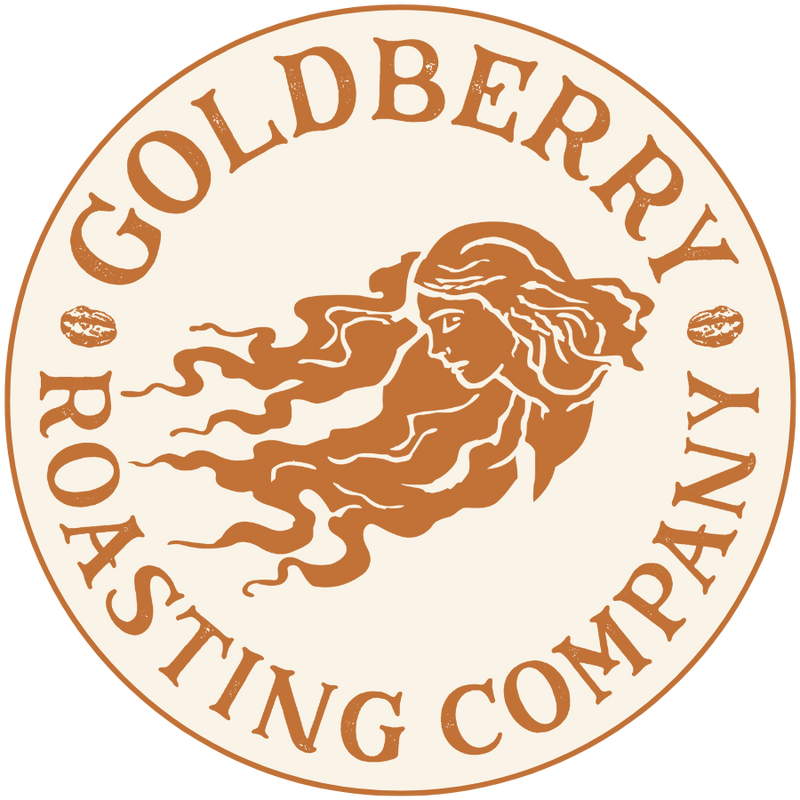Arabica vs Robusta: What’s the Difference?
Posted on November 03 2025,

If you've browsed specialty coffee bags or asked a roaster like Goldberry Roasting Company about bean types, you’ve almost certainly heard the question: “Arabica vs Robusta – which is better?” It’s not just marketing—it’s about species, growing conditions, flavor profiles, and how those factors show up in your cup.
At Goldberry, we believe transparency matters. We want you to understand what goes into your bag of beans and how our sustainable sourcing and small‑batch roasting bring out the best in each variety. In this guide, we’ll explain the key differences between Arabica and Robusta coffee, why those differences matter, and how that affects your brew.
What Are Arabica and Robusta?
When you buy coffee beans, you’re almost always dealing with one of two species:
-
Coffea arabica (Arabica): The more widely planted species, known for higher altitude, cooler climates, and more complex flavor.
-
Coffea canephora (Robusta): Hardier plant, grows at lower altitudes, more resistant to pests and disease—but with a different flavor profile and higher caffeine content.
In short: the difference between Arabica vs Robusta is rooted in genetics, agriculture, and ultimately flavor.
Growing Conditions & Agricultural Differences
Arabica
-
Grows best at higher elevations, typically above ~1,000 meters.
-
Prefers cooler, more stable climates with distinct seasons.
-
More vulnerable to pests, diseases, and environmental stress.
-
Because of its growing needs, it tends to cost more to produce.
Robusta
-
Thrives at lower elevations, in hot, humid areas.
-
Stronger plant, more resistant to disease and rough conditions.
-
Higher yield and lower production cost.
-
Because of that, it can be more economical for large‑scale production.
These differences matter: when you support specialty roasters like Goldberry who source carefully, you’re often supporting farms that grow Arabica under specific conditions and invest in quality.
Flavor Profiles: Arabica vs Robusta in the Cup
Arabica
-
Typically more delicate and nuanced: fruity, floral, sweet, bright acidity.
-
Lighter body compared to many Robusta beans.
-
Higher potential for origin‑specific flavor, meaning you can taste terroir (region, elevation, soil) in the cup.
Robusta
-
Typically stronger body, often bitterer or harsher if not processed and roasted with care.
-
Less acidity, sometimes more earthy or woody tones.
-
Often used in blends (especially for espresso) to boost crema and body.
So when you see “Arabica vs Robusta,” the key takeaway is: Arabica generally offers more complexity and nuance; Robusta offers robustness, strength, and often serves a different role in blends or certain roast profiles.
Caffeine Content & Investment
Another difference: caffeine levels. Robusta beans tend to contain more caffeine than Arabica. This isn’t always the most important factor for flavor, but it’s a piece of the species difference.
From a production and cost perspective, because Robusta is easier to grow in harsh conditions and more prolific, it can be less expensive for roasters to source. At Goldberry, we focus on the beans that meet our specialty criteria (80+ score on the grading scale) and deliver flavor—not just economics.
How Goldberry Uses These Bean Types
While Goldberry’s product line emphasizes high‑quality single origin coffees and blends using Arabica beans (which align with the third wave philosophy of transparency and origin), it’s useful to understand why Robusta might appear in certain contexts.
-
We prioritize specialty Arabica beans—since we source from regions such as Ethiopia, Brazil, El Salvador, Sumatra, Mexico and more.
-
For espresso or blends where extra body or crema is needed, roasters sometimes include a bit of Robusta. That does not mean lower quality—it means different design goals (body, durability, cream).
-
We aim for traceability, origin story and flavor clarity. Understanding “Arabica vs Robusta” helps explain why we label origins, roasting profiles and processing methods.
Which One Should You Choose?
If you’re a coffee lover picking up a bag or choosing a drink at a café, here are some guidelines based on what you like:
-
Prefer bright acidity, clean flavors, fruit or floral notes? → Choose a specialty Arabica single origin.
-
Want bold body, heavy cream, rich chocolate or roasted flavors (especially in espresso)? → A blend with some Robusta might deliver what you seek.
-
Pay attention to roast level, processing and origin—not just species. A high‑quality Arabica that is roasted or stored poorly can taste worse than a well‑handled Robusta blend.
At Goldberry, we encourage you to ask origin, roast date, processing method, and species where available. That helps you understand your bean and brew.
Arabica vs Robusta in Your Cup
The conversation about “Arabica vs Robusta” is more than botanical—it’s about story, environment, flavor, and choice. At Goldberry Roasting Company, our mission includes sourcing exceptional coffee, supporting growers and delivering flavor you can trust. Understanding the difference between species helps you make smarter choices and appreciate what’s in your bag and your cup.
Whether you’re sipping a bright Ethiopian Arabica in a pour‑over or enjoying our bold Espresso blend (which may include corpos with body like Robusta‑enhanced formulas), you can taste and know the difference. And that’s part of the joy of specialty coffee.
Ready to explore more?
Browse our lineup of single origin and blends and look for notes on origin, roast date, processing—and yes, sometimes species. When you know what you’re drinking, every cup becomes richer.
